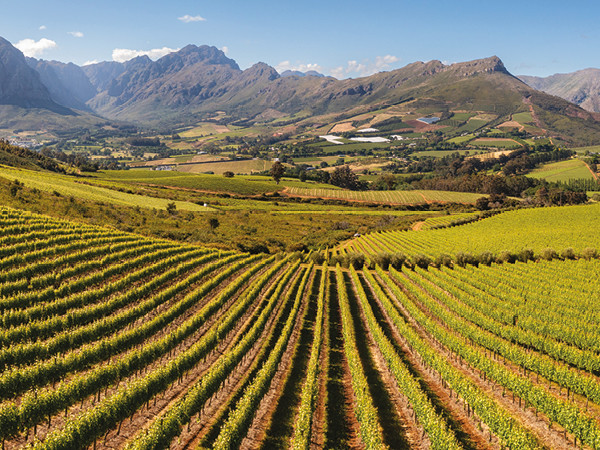
Soapbox: Cape expectations
Without greater financial sustainability for Cape growers, an increasing number of South Africa’s premium vineyards are under threat. DGB marketing director Andrew Harris explains the problem.
We’ve been through a big journey over the past decade or so, a very deliberate transition, and sustainability is a big part of our business. We’ve also got a strong commitment to premiumisation… but what does that actually mean when the rubber hits the road? What we’ve put together is something that we’ve called a ‘360 degree approach to premium’. And that focuses on the lifecycle of a wine from the moment you plant the vineyard, all the way up to the moment the consumer buys and drinks it.
I’m going to start with the bad news. It’s not a pretty picture in South Africa. Only 9% of all growers are truly profitable, which is a problem, because if it is not profitable, the farmers can eventually say ‘Jeez, guys, there’s a lot of other things I can plant – apples, pears, rooibos…’ and that’s a big issue for the industry.
Our commitment to the national vineyard is that we make sure all the growers we work with operate in this 9% sustainable point, being properly paid. We often talk about sustainability as being renewable energy and recycling, but you’ve also got to look at a sustainable industry. If you don’t have a sustainable industry, then there’s nothing to sustain from a green point of view.
- Read more: Soapbox - Bracing for major change
Back to the bad news. Looking just at Stellenbosch, in 2001 there were 12,846ha in the ground. In 2021, there are only 10,796ha. The picture gets even worse if you look at just the last 15 years – we’ve seen a 61% reduction in total hectares being planted in Stellenbosch. And if you think that Stellenbosch is one of the most premium areas in South Africa for quality – particularly red wines – it’s a scary thought if vineyards that are critical to your business are disappearing. And then if you look at premium red wines generally in South Africa, over the past 50 years there’s been a 70% decline in plantings. The prime areas are getting scarcer and scarcer; and you’re not getting people planting on speculation, no one is planting Cabernet and saying, ‘who’s going to buy this?’
You’ve got to have a commitment to the very, very long term. Old vines are good if they’re healthy, but unfortunately in Stellenbosch many vines are virus infected and they’re going to give about 18-19 years before quality drops. Then you’re not getting your yields and at about 25 years old you’re going to need to take them out. But we don’t have young vines going in to fill this void.
↓
Timeline problem
The projection over the next five years in Stellenbosch is that 1,821ha is to be uprooted and only 1,000ha to be planted, with Cabernet the worst affected. We’ve got old vineyards in the ground, but plantings are not going to outstrip that uprooting. So what are we doing about it to future-proof ourselves?
One problem is the timeline. If we say “we need another 100,000 litres of Cabernet, but we need to plant new vineyards”, then you need to wait for the vines to mature. For the first three to four years the vineyard is just getting established and there’s no real crop. Then we get our first crop, but generally this can’t go into your prestige cuvees, the fruit doesn’t have the complexity. It’s not until the vineyard is eight or more years old when we would consider those grapes for premium wine. And then we’ve still got to add 36 months of maturing the wine, in barrel and bottle, before we start to get it to market. So it can take 12 years for that wine to actually materialise.
And it’s a calculated long-term investment – you’ve got to plant in the right areas with the right grapes. We’ve invested in a lot of terroirs that we really believe in, one of them being Stellenbosch and also particularly that Golden Triangle area of the Helderberg. We’ve also properties in Elgin, a very nice cool area – particularly for Sauvignon Blanc and Chardonnay, and we’ve some really good Pinot Noir. We bought Fryer’s Cove a couple of years ago, an extremely exciting project, which is on the west coast, next to the ocean – the smallest appellation in South Africa. It’s really something unique and special, with Chardonnay, Pinot Noir and Pinotage.
The 360 degree approach will continue to be important to us, particularly on the old vine side of things, which we are very committed to. We are currently the largest producer of certified heritage wine in South Africa and the quality is exceptional. But all of this is wrapped around a core of sustainability and that is not something you can do in isolation.
There needs to be a real commitment to premium South African wine, a commitment to these unique pockets of terroir – that is a scarce and finite resource and there is scarce and finite space.




